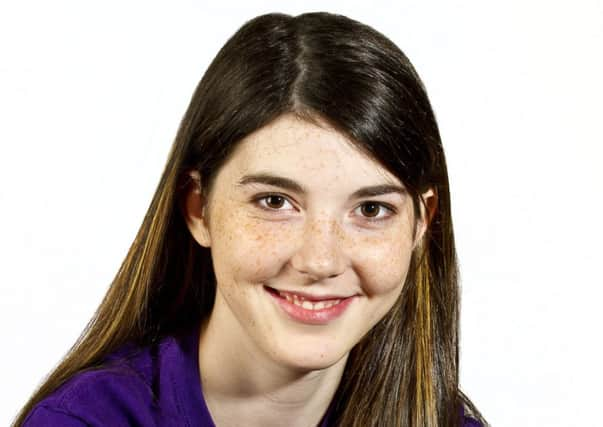Comment: Counting on the colour purple


Generally speaking, disability, like religion, is no laughing matter. There are exceptions; comedian Francesca Martinez has mild cerebral palsy and disarmingly refers to herself as being “wobbly”. You might expect that someone who earns a living from making other people laugh would not take herself too seriously, but there will also be endless examples of comedians who take themselves very seriously, who might laugh at themselves professionally but privately be very precious indeed. And while many people happily poke fun at themselves, they’re not so happy if someone else has a go.
It’s complicated, the use of humour. Humour thrives in the right context and dies outside it. It is situation-dependent and contextually driven. It can be playful or serious in intent. If weaponised it can be more dangerous to the user than the target. There is no doubting the power of humour.
Advertisement
Hide AdAdvertisement
Hide AdNo charity would term their cause frivolous, much less funny. All charities would say they exist for a worthy cause. And for worthy, read well-intentioned and praiseworthy, and earnest, yes, but not so much as to be off-putting and dull about it. Regardless of how worthy the cause, how it is supported need not be dull at all.
SEE ALSO:
Last year saw the world-wide phenomenon of the ice bucket challenge. It began in the US as an attempt to raise money for amyotropic lateral sclerosis (ALS), in the UK more commonly known as motor neurone disease (MND). MND is progressive, fatal and there is no known cure. It is not funny. But the amusing ice bucket challenge went viral, went celebrital, and raised millions that could be used for support and for research. The challenge became so big it began to dissociate itself from its origins. Other charitable causes benefitted from a jump onto the ice bucket bandwagon, which didn’t go down universally well with charity supporters if not charities themselves because charities are a serious business, often competing for funds for their respective worthy causes. Charity supporters are at liberty to have a public spat, but charities generally are not. It’s neither funny nor worthy.
In the UK we have practically institutionalised humour as a support mechanism for charitable activities, Comic Relief being the apotheosis. Worthy comedy indeed. Here the jester asks for his or her reward to be donation to charity just the same as the charity runner does who makes it more difficult by going the distance dressed as a Womble or a banana.
Still there remains a disconnect between the cause (not funny) and the fundraising activity (funny). In our wacky world even this doesn’t always hold true. A benevolent fund has recently been established by professional comedians for professional comedians. With the stated aim of becoming a registered charity, Comedy Support Act has been set up to help people who earn a living through comedy and who are suffering financial hardship through illness or accident. The first gig to raise funds was held in January in London’s Comedy Store. It was a sell-out.
Comedians have a head start on most professions for fundraising because what they do is already an attractive and engaging way of bringing in money for charity. A theatre show of freestyle audit to raise money for accountants by accountants might not sell out. No offence, but I wouldn’t pay to see performance chiropody either.
Charities are always on the look-out for that engaging fundraising activity, and not having salaried comedians employed, hope that it will be funny but will settle for it being different.
In 2008, an eight-year old girl in Canada called Cassidy Megan came up with the idea of Purple Day. It has gone global, –admittedly not quite with the same impact as the Ice Bucket Challenge but global nonetheless. Purple is the colour most associated with epilepsy and Cassidy thought that having a day set aside where people could wear purple, or turn something purple, or purple theme anything at all, could raise awareness of epilepsy.
Purple Day falls on 26 March so there is a way to go yet for you to come up with your own idea. If it stands out, great. If it’s funny, even better.
• Lesslie Young is chief executive of Epilepsy Scotland